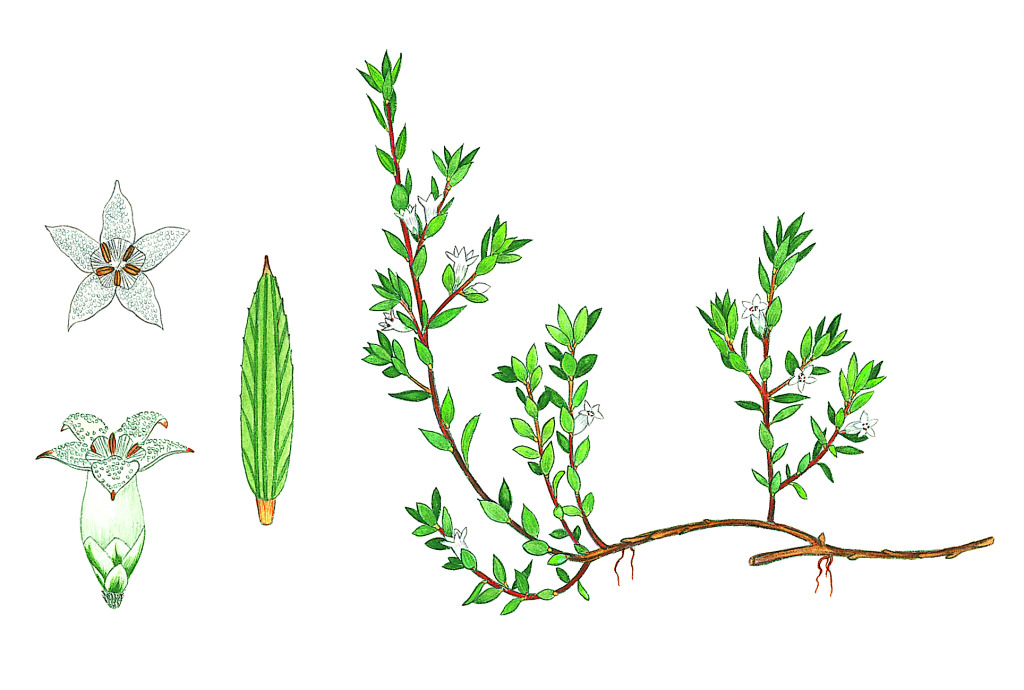Brachyloma ciliatum
(R.Br.) Benth. Fringed BrachylomaDecumbent or erect suckering shrub to c. 30 cm high; branchlets puberulent to villous. Leaves ascending, ovate-lanceolate to oblong-elliptic, 4–14 mm long, 1–3.3 mm wide, mucronate, glabrous to villous, flat to slightly convex, lower surface paler; margins plane to slightly recurved, serrulate-ciliolate. Flowers solitary white; bracteoles and sepals ovate, acute; bracteoles 1.2–2 mm long; sepals 1.5–2(–2.5) mm long; corolla cylindric, 2–3 mm long, glabrous internally except for 5 tufts of reflexed hairs between anthers; lobes acute to acuminate, spreading to recurved, inner surface papillose, 1.2–2.5 mm long; anthers not cohering, enclosed within corolla tube, usually bearded on lower half; ovary 5-locular, style glabrous, 0.8–1.2 mm long. Flowers Oct.–Jan.
LoM, Wim, GleP, VVP, GipP, OtP, WaP, Gold, CVU, GGr, DunT, EGL, EGU, WPro, HSF, HNF, OtR, MonT, VAlp. Also SA, Tas. Occurs in heathland and woodland on sandy or skeletal substrates, chiefly in the west, scattered and rather uncommon east of Port Phillip Bay (e.g. Cranbourne, Arthurs Seat, French Is., Cape Liptrap, Yarram, Mallacoota area).
Albrecht, D.E. (1996). Epacridaceae. In: Walsh, N.G.; Entwisle, T.J., Flora of Victoria Vol. 3, Dicotyledons Winteraceae to Myrtaceae, pp. 464–509. Inkata Press, Melbourne.
 Spinning
Spinning
